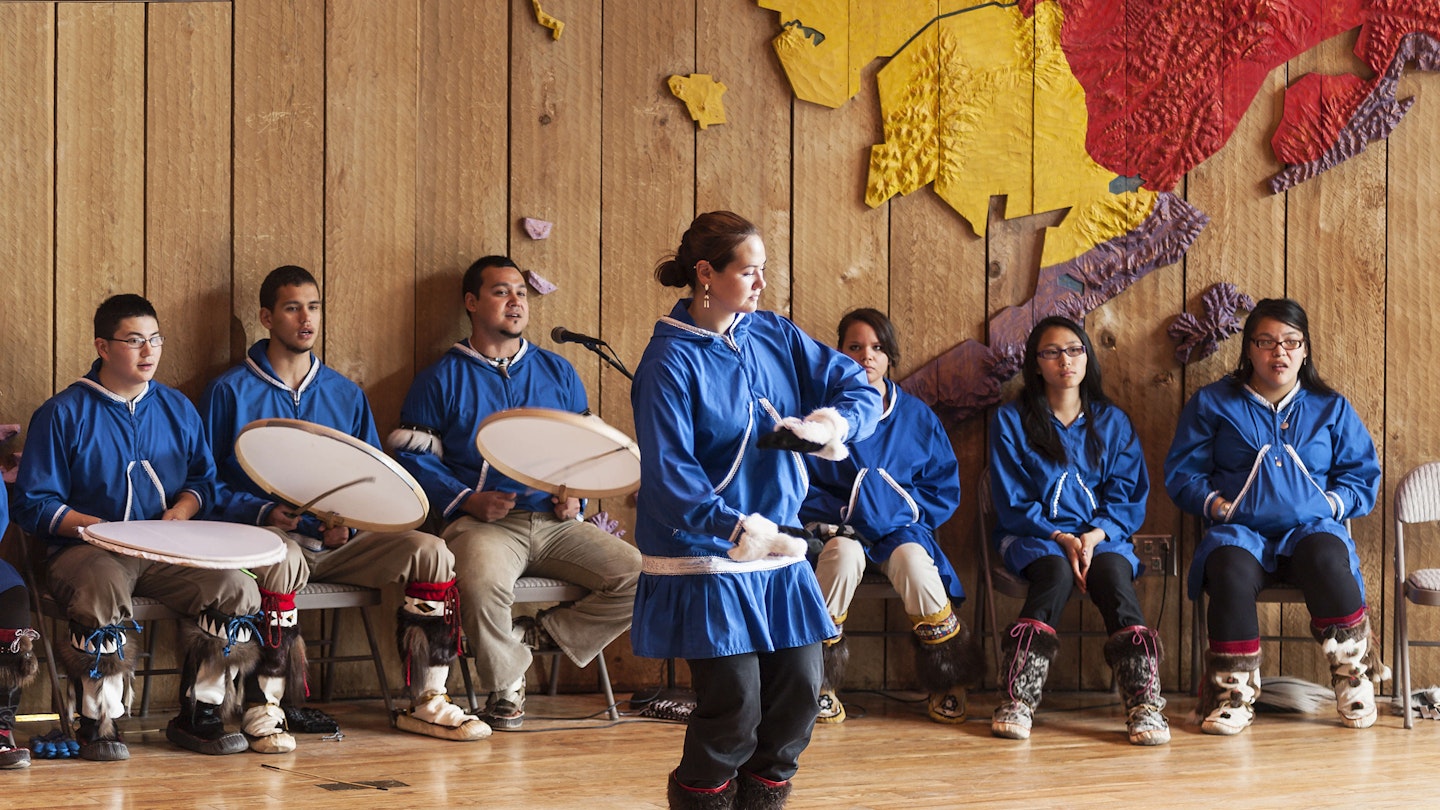Introduction to Anchorage Museums
Most visitors to Anchorage merely pass through the city on their way to engaging wilderness pursuits. However, scattered around this metropolitan area, more than half a dozen museums offer a quieter, more enriching way to learn about this lightly populated state. Here are seven places where you can experience stirring objects, traditions, and stories that reflect Alaska’s unique character.
Anchorage Museum: Best for Art
Head and shoulders above any other in Anchorage, and perhaps the best museum in Alaska, the Anchorage Museum occupies a building made of reflective glass panels, set in a leafy landscaped park that spans an entire city block.
Since its inauguration in 1968, the campus has undergone several expansions. The most ambitious took place in 2010, with the addition of a four-story mirrored structure known as the “west wing,” which houses the Smithsonian Arctic Studies Center. This encyclopedic collection of over 600 Alaska Native objects includes art, tools, masks, and household implements dating back as far as 130 years. Video exhibits documenting contemporary Alaska Native life enhance the displayed objects.
The museum’s most recent extension, the Rasmussen Wing, added in 2017, provides extra space for the museum’s growing art collection. Galleries juxtapose Tlingit carvings with works by landscape painters like Sydney Laurence, whose haunting studies of Denali date from the early 1910s.
Additionally, the original east wing houses a kid-oriented Discovery Center focusing on introductory science and astronomy. Above that, the Alaska Exhibition narrates the story of the territory-turned-state, tracing thousands of years of human settlement from early subsistence communities to the era of the oil pipeline.
Oscar Anderson House Museum: Best for History
This quaint wood-paneled house, dating from 1915, is perched on the western edge of downtown Anchorage and represents one of the first permanent structures built when Anchorage was little more than a tent city. Built by a resourceful Swede named Oscar Anderson, who arrived in Alaska from Seattle, the house remains a testament to early pioneering life.
Anderson lived in the house until his death in 1974 at the age of 91. Following his passing, the property was transformed into a museum. Inside, period furnishings create a realistic snapshot of early pioneer life, allowing visitors to envision life in that era. Volunteers provide guided tours of this National Register of Historic Places-listed house during the summer months.
Alaska Native Heritage Center: Best for Live Performances
This cultural and educational institution celebrates the Alaska Native groups who have inhabited these northern climates for millennia through dynamic performances and captivating stories. Spread over a wooded 26-acre area on the Glenn Highway outside of downtown, it is an essential stop for anyone with an interest in Alaskan history.
The main building showcases items related to the region’s traditional ways of living, like kayaks, woven baskets, clothing, and footwear. It prominently features diverse performances in the “gathering place,” including the revitalized staccato Alaghanak song, captured from tribal elders.
Outside, a picturesque lake is surrounded by various traditional dwellings, including an Athabascan family lodge and a sod-and-thatch Alutiiq home, which are beautifully constructed and informative. Guides elucidate the ancient architects’ artful technologies, with totem poles and a giant gray-whale skeleton providing engaging scenery. Summer visitors can enjoy complimentary shuttle services to and from the information center downtown.
Alaska Museum of Science and Nature: Best for Kids
As the flagship natural-history museum in Anchorage, it is dominated by reminders of dinosaurs, eliciting excitement in the imaginations of children. Expect engaging exhibits alongside the buzzing energy of school groups and birthday parties. Featured attractions include a full-sized pterosaur replica, an extensive rock and fossil collection, and a giant beluga-whale skeleton.
This museum, slightly off the beaten path in the Mountain View neighborhood, is ideal for a rainy day, providing an engaging experience for children and a means to expend energy.
Alaska Public Lands Info Center: Best Free Museum
Staffed by US National Park Service rangers, this informative center in Anchorage serves as a mini-museum and essential portal for aspiring hikers, mountain bikers, and kayakers venturing into the wilderness. Housed in the historic 1939 Federal Building, it features mounted wildlife taxidermy, free films, and engaging dioramas. In summer, storytelling rangers lead free guided walks around downtown.
Alaska Aviation Museum: Best for Large-Scale Outdoor Exhibits
Located on the south side of Lake Hood, this museum chronicles the history of aviation in Alaska, where flying is often the primary mode of transportation. Spread across several hangars and outdoor areas, the museum pays homage to the state’s intrepid bush pilots and their resilient aircraft.
The site features 25 vintage aircraft, including bush planes, floatplanes, and WWII crafts. To enhance the experience, visitors can engage with a virtual-reality simulator that mimics a flight in an Aleutian Tiger P-40—a remarkable opportunity for aviation enthusiasts.
Alaska Law Enforcement Museum: Best Small Museum
Delving into law enforcement challenges in one of America’s crime-ridden states, this unique museum runs by the Fraternal Order of Alaska State Troopers offers insight into local policing. Situated amid a strip of shops in downtown Anchorage, the museum displays historical photos, old uniforms, a CSI room, and a significant collection of police patches. A standout is the beautifully restored 1952 Hudson Hornet police car, which occupies a prominent spot in this compact yet informative space.





